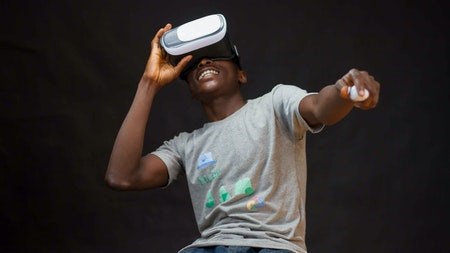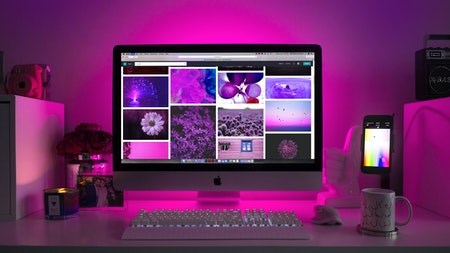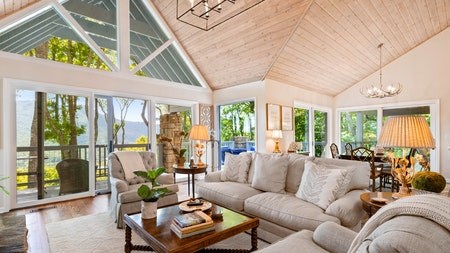Stand in one place in a room in your house, perhaps the one you are most proud of in terms of décor, and turn around a full 360 degrees. As you do this take in everything in the room, note your feelings, note heights and light. Now imagine that you can project EXACTLY what you see to someone else; that with their smart device in their hand, they too can stand in one place, no matter where in the world they are, and turning around they are projected to the same spot that you are standing.
This is the world of virtual reality (VR), and gyroscope, the technical term for basically being able to spin a full 360 degrees, is just one amazing benefit enriching the experience of a virtual tour. Replicating reality is driving the future depth of our experiences, and although there is no absolute scientific evidence that VR impacts on our visual memory, it has the ability to drive our imaginations and take us to places that we may never have the opportunity to visit.
As an educational tool, this is transformative; you may visit museums and view art as though you were literally standing in front of a painting. Children who have never seen a coastal line, can wonder at the magnificence of the sea. And when you are looking for that perfect home, you are able to not only be in the room, and this is where VR really starts to blow your mind, you can even remove items that you don’t resonate with, such as a piece of artwork, or enter a home from any access door such as the garage.
The only thing missing from a VR experience (currently) are the other senses; you cannot engage smell, taste, touch, but hearing can be accounted for with soundtracks/audio files.
The technology behind VR is incredibly complicated; involves Artificial Intelligence (AI) for example, but in current times it is actually the Covid-19 pandemic that is driving the rapidly growing adoption of VR and effecting enormous change in how we work, play and live.
In fact, says Jacques Pierre Niemandt, CEO and Owner of Virtually Integrated Photography (VPiXSA), it is Covid that has pushed VR technology right into the hands of any owner of a smart device, and in this case, those who are selling or in the market to buy a private property. “Demand for VR business has almost outgrown the supply but our services have proven to be Covid-19-proof, making us ready for 2021 and beyond.
It empowers prospects to walkthrough listings before, and if necessary, scheduling onsite tours, saving time yes, but more importantly it addresses the ‘safety’ concerns around Covid-19. For agents the advantages are incomparable to purely a static marketing campaign. Presenting a virtual tour gives a listing a competitive edge, reduces the sales cycle, captures more leads, generates more subscribers; simply put it elevates the engagement with both buyer and seller.
It’s hard to stop Niemandt from becoming over-technically excited, but the future of VR is going to be even more incomprehensible. “VR will be able to manifest transparency, such as being able to almost ‘x-ray’ features in a home, in other words being able to see what is invisible to the eye.
“A shiny new thing called XR is also on the horizon, the X being an umbrella definition for a bucketful of mixed realities inclusive of Augmented Reality, which is when perception is enhanced with sensory capacity, so you’ll be able, for example, to smell and hear true environmental factors of the real tour site.”
How a virtual home tour is manifested involves the use of specialised 360 degree camera’s that have fish-eye lenses to account for a full rotational image, and although it takes static shots, the camera automatically ‘stitches’ together those images to give you the best possible projection of the surroundings.
Operated by a professional photographer who needs to be specifically trained, these camera’s account for perspective. All spherical panoramas have a 2:1 ratio, because the field-of-view (that being the extent of what you see at any given moment) is 360 degrees x 180 degrees. “The viewer does need to get used to this type of viewing but the photographer accounts for this through the expertise of executing the photography correctly,” explains Niemandt.
This means the photographer also needs to stage the camera setup to ensure high definition resolution (HDR) - literally the highest quality and sharpest image as possible, which compensates for dark corners, and windows that could tend to look blown out; and bracketing, which is the technique of taking several shots of the same subject using different camera techniques.
It is also the photographer that is the ultimate decision-maker in presenting look and feel of a house as projected in the tour, but with the help of the owner or the agent.
Niemandt explains that staging a room, or home, is the most time-consuming part of the process. “Making sure the property looks good and is as clean as possible is crucial for serious sellers. This goes to creating the right atmosphere, such as introducing fresh flowers or candles as would be done for a standard show day. The buyer/agent needs to advise the photographer of special interior or exterior features, so those can be highlighted as ‘hotspots’ in the VR tour.”
Hotspots are accompanied by information boxes. As a viewer walks through the VR tour, these hotspots pop up an information box, describing the points of interest that make the property stand out. “Hotspots can been enhanced further with audio description. What’s also proving popular is an audio of the entire story of the property, with that information provided by either the seller or realtor,” says Niemandt.
VR is rapidly building on the momentum to overtake the bog-standard static property images of the past. It’s being used not just to show homes, but in marketing and advertising campaigns too. VR can even build a facsimile of a completed and fully decorated apartment or property from a floor plan, which secures sales even before a brick is laid.
“But be warned; doing this yourself requires a huge investment in not just the equipment needed, but the technology, inclusive of back office support. This is why using a professional company is so much cheaper. With the content remaining the sole property of the contractor, VR really does suit realtor agencies that not only want to take some lead in highlighting their properties as unique, but also want to ensure their branding is consistent across their entire network of agents,” says Niemandt.




